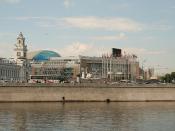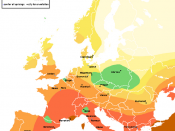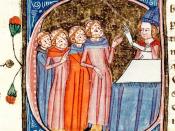Stress and Change: The Late Middle Ages
The Late middle ages looked like one which took downfalls and uprisings and just formed it into one big set of changes. One significant event in the late 14th century of the medieval church was the Babylonian Captivity. This was the period in where the seat of the pop was moved form Rome to Avignon. The seat was held for 75 years before being moved back to Rome. Also around the time the Great Schism took place in where the division of the church took place. The popes Urban VI (1378-1389) and Clement VII were the two popes who caused a split in the churches. The French Cardinals claimed Urban's election was void and in turn two popes rules in religion at the time which caused a form of ex-communication against one another. Other troubles plaguing Europe were famine which led to a lot of disease and a decline in the economy of Europe.
One of the big factors which really hurt the European society was the rise of the disease called "Black Death" This disease wiped out up to þ of European population. The disease was spread in two forms (Bubonic and Pneumonic). Ships were quarantined, people were killed, and society was in a craze. There were periods of isolation and society thinking that this was the Armageddon for the world. In the end this plague helped to strengthen Europe in a way in how it decreased famine, increase jobs, decreased payments on goods, and raised the social standing of the economy.
The Black Death followed with many upheavals by peasants and the way that people were treated in these kingdoms. There were revolts in countryside with revolts such as the jacquerie. And the Ciompi. Ciompi dealt with workers uprising for better...


